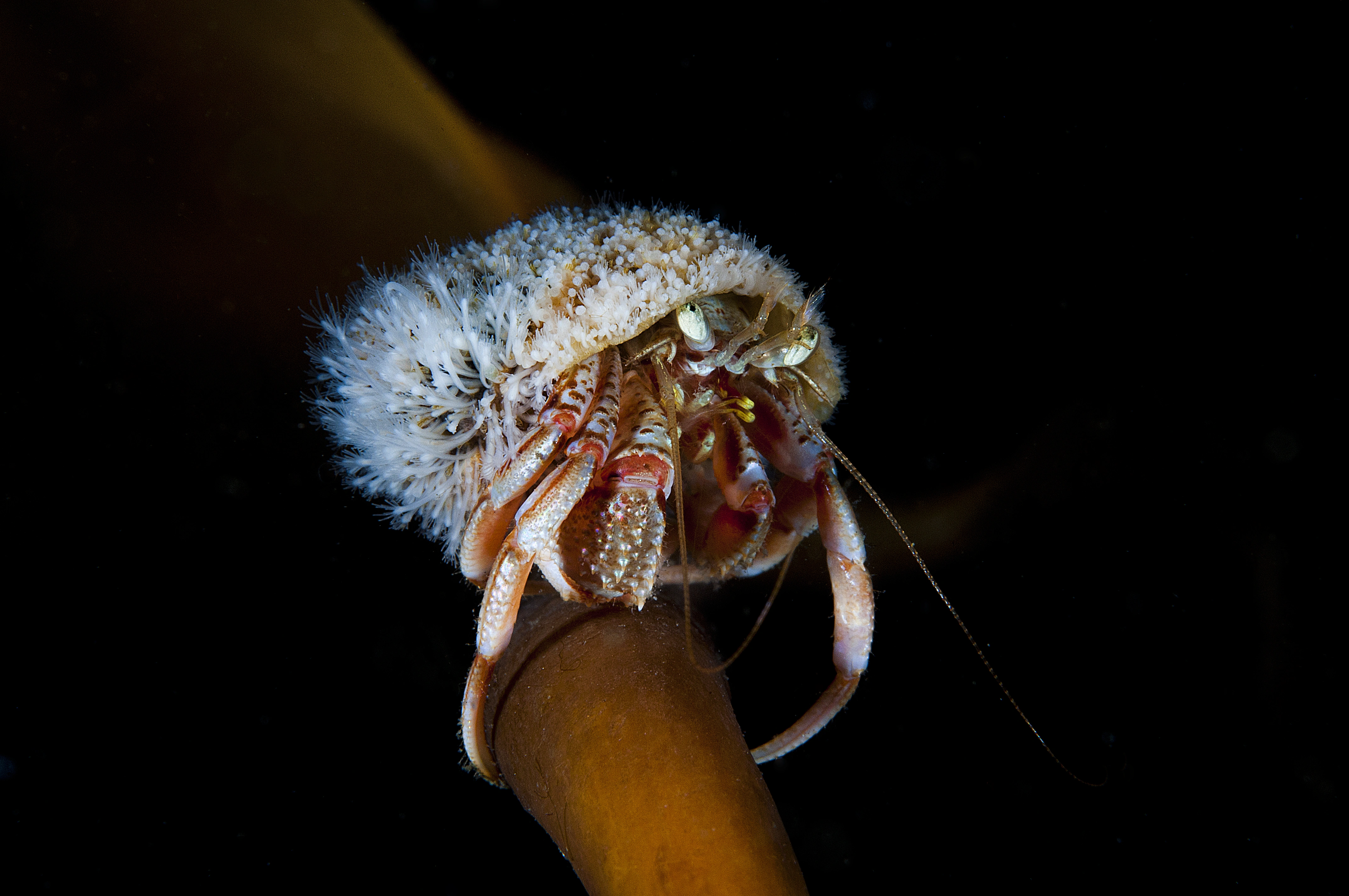Hydractinia sarsii
The polyps of H. sarsii have a relatively high number of tentacles, compared with other Hydractiniidae species.
The hydroid colonies of Hydractinia sarsii grow on mobile substrates, often on snail shells inhabited by hermit crabs. This species was originally described based on Norwegian specimens, but it has been recorded only a few times after that and much of its biology and ecology remains a mystery.
Identification
The colonies of H. sarsii have feeding polyps (gastrozooids) and reproductive polyps (gonozooids) that look similar to each other, even when the latter are developing gonophores. Both types of polyps are 1–3 mm high and have up to 30 tentacles, a number relatively high in comparison with all other species of hydractiniids that occur in Norway. The hydrorhiza or ‘root’ system of the colony takes the form of an encrusting plate from which spines and prickles emerge. The spines are smooth and conical, never serrated. The gonophores are fixed sporosacs, they develop in one whorl in the upper region of the gonozooid.
Different views of the polyp stage of Hydractinia sarsii.
Look-alikes
The general appearance of the colonies of H. sarsii is similar to those of Hydractinia echinata, but the two species differ in two important characters: 1) H. echinata has large serrated spines while H. sarsii has small smooth conical spines, and 2) the gonozooids of H. echinata lack tentacles and are morphologically very different from the gastrozooids of the same colony, while the gonozooids of H. sarsii have tentacles and look otherwise similar to the gastrozooids of the same colony.
The colonies of Stylactis fucicola are extremely similar to those of Hydractinia sarsii, but these two species differ in their distribution (H. sarsii is known from Norway, Greenland, Iceland and the Faroe Islands, while S. fucicola is mostly a Mediterranean species), preferred substrate (H. sarsii grows on moving substrates like hermit crabs while S. fucicola grows on non-moving substrates like algae), and in the number of tentacles of the polyps (up to 30 in H. sarsii, 8–12 in S. fucicola).
Biology, ecology and behavior
The colonies of H. sarsii seem to prefer snail shells inhabited by the hermit crab Pagurus pubescens, although they have also been observed growing on the crab carapace of Geryon trispinosus.
The colonies of H. sarsii are locally common in some shallow areas of Northern Norway.
Distribution
There are only a few records of this species, and these come from Norway, Faroe Islands, Iceland, and Greenland.
References
Schuchert P (2008). The European athecate hydroids and their medusae (Hydrozoa, Cnidaria): Filifera Part 3. Revue suisse de Zoologie 115(2):221–302.
Schuchert P (2012). North-West European athecate hydroids and their medusae: keys and notes for the identification of the species. Field Studies Council. Synopsis of the British Fauna (New Series) No. 59. 364 pp.



